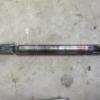Sign in to follow this
Followers
0

Painting in cold weather
By
dgjks6, in Restorations, Modifications, & Customizations

By
dgjks6, in Restorations, Modifications, & Customizations